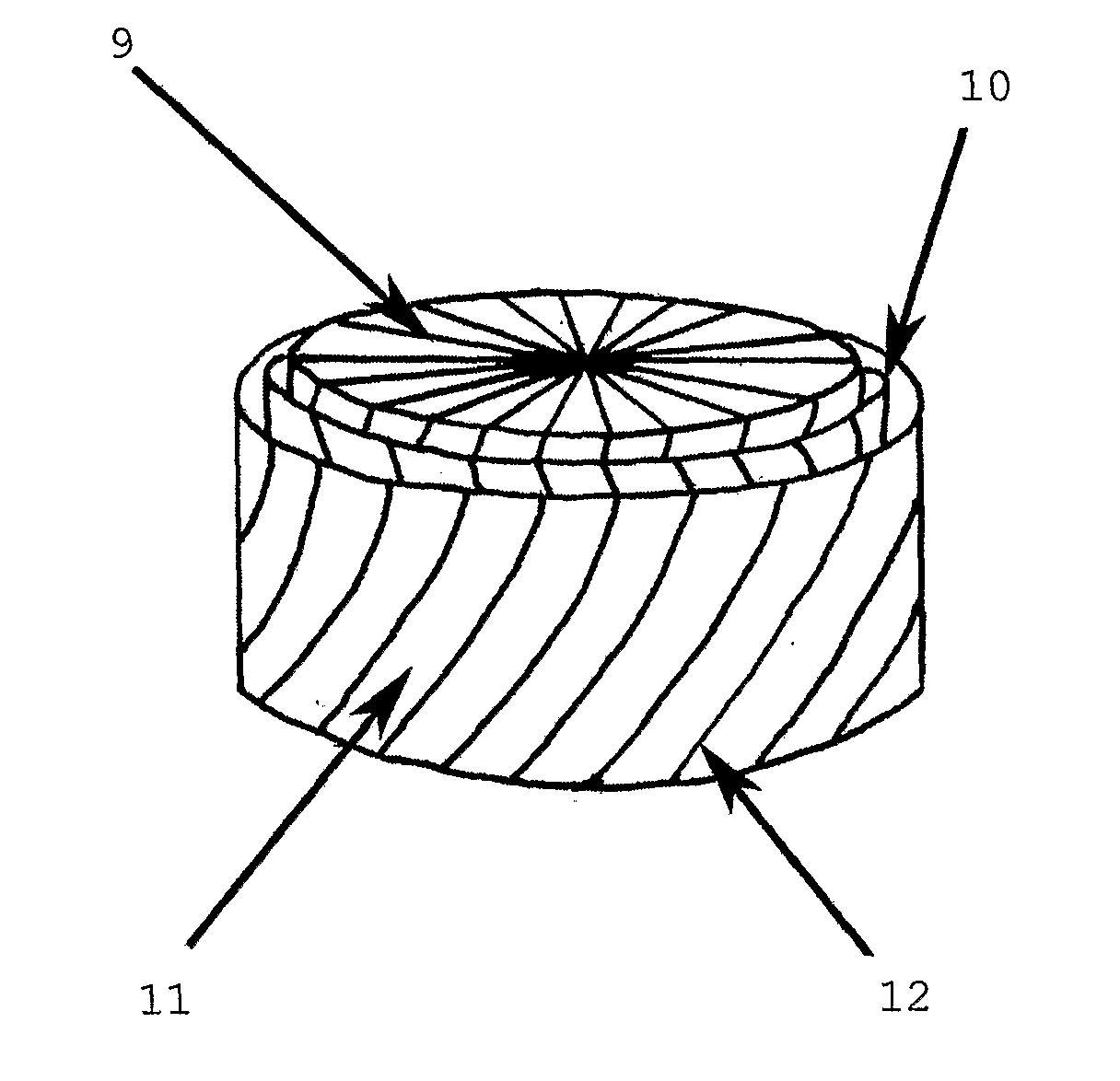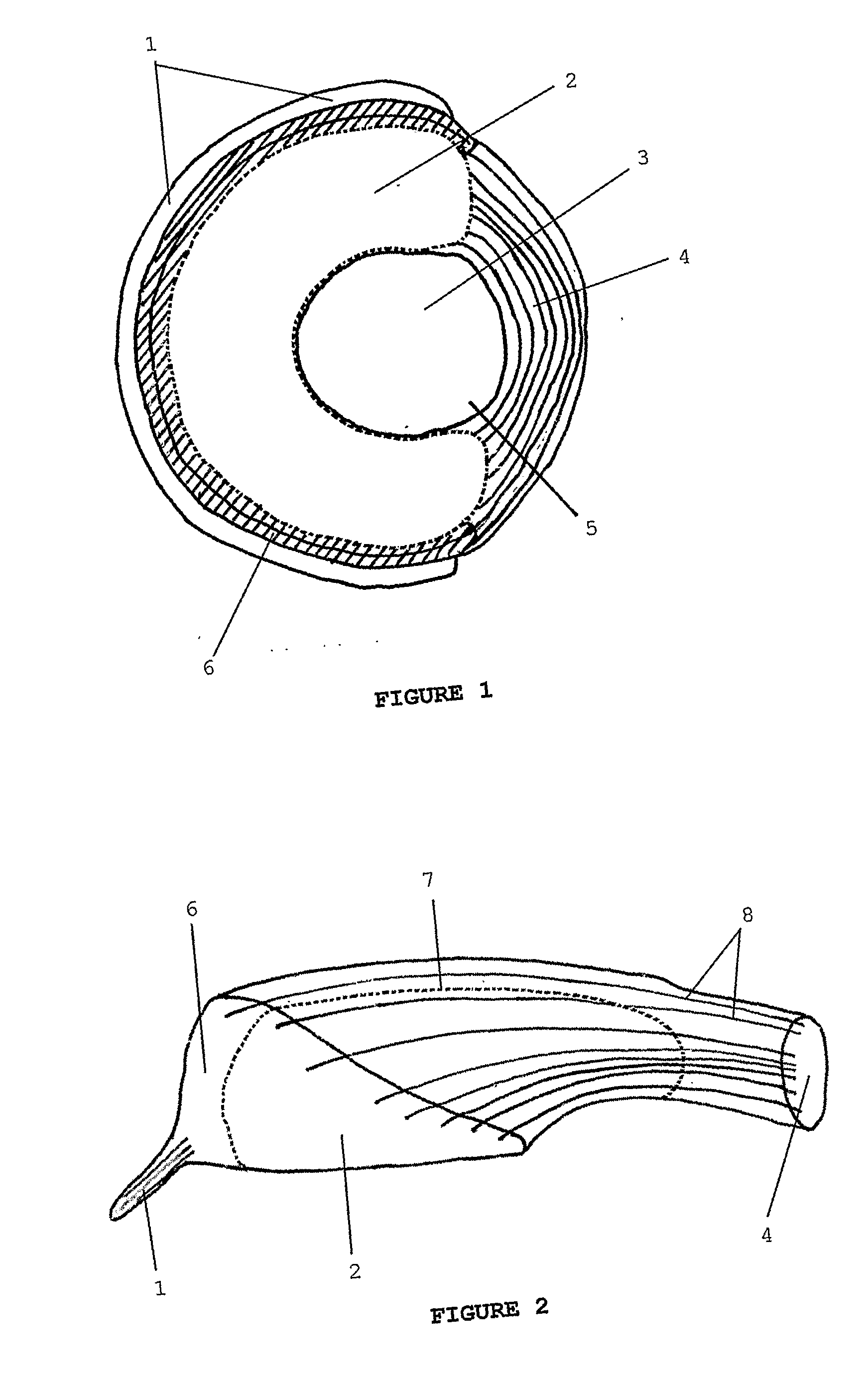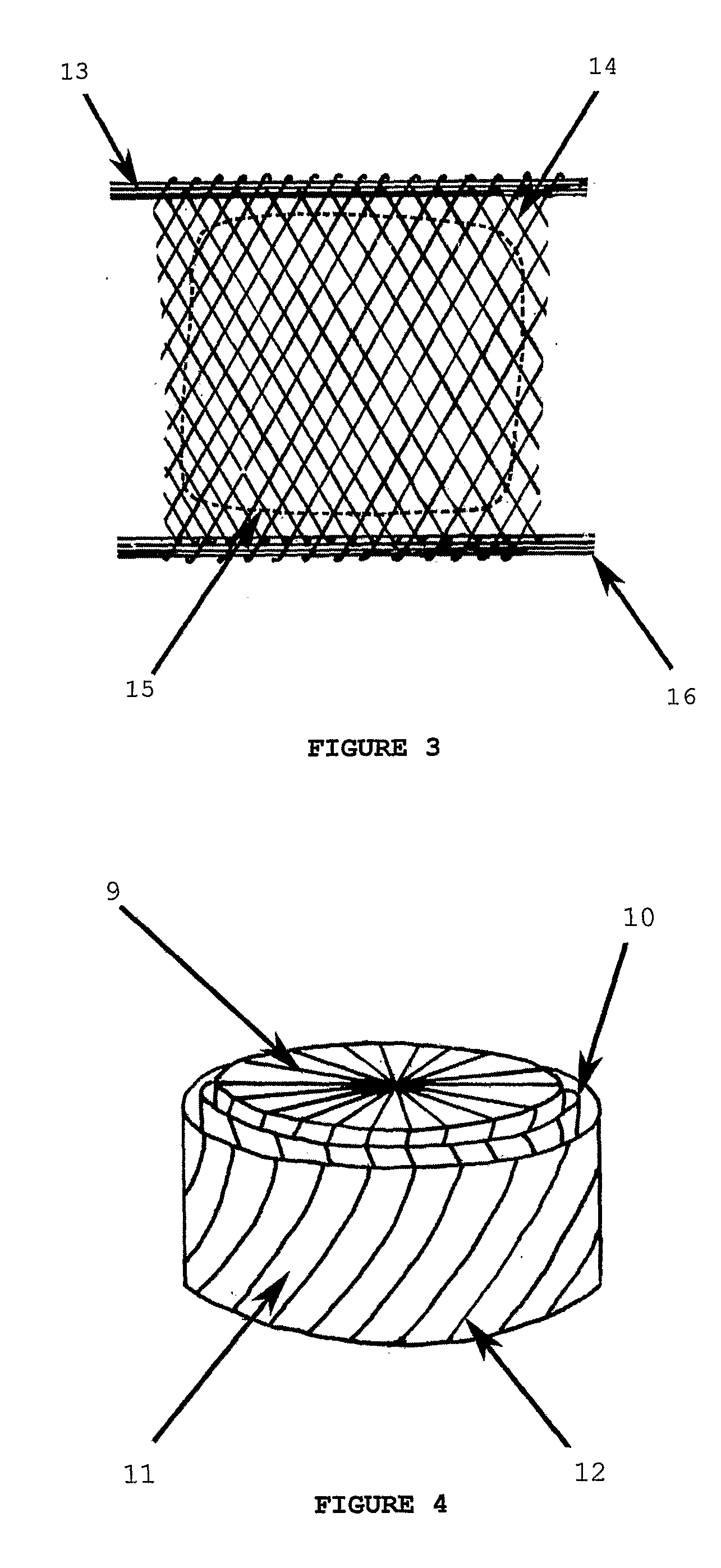Implantable cartilaginous tissue repair device
a cartilaginous tissue and implantable technology, applied in the field of surgical devices, can solve the problems of pain and reduced mobility in old people, injury to the fibrocartilage of the meniscus, and small volume for discharging energy, and achieve the effects of convenient fixation, high modulus, and strong and tough attachment to the bon
- Summary
- Abstract
- Description
- Claims
- Application Information
AI Technical Summary
Benefits of technology
Problems solved by technology
Method used
Image
Examples
Embodiment Construction
[0057]FIGS. 1 and 2 are respectively a schematic plan view and a schematic cross-sectional perspective view of an embodiment of a meniscal repair device according to the invention.
[0058]A three-dimensional fibre lay of silk fibres—both circumferential (8) and radial (not shown)—has been impregnated partially with a porous regenerated silk fibroin hydrogel and partially with a non-porous regenerated silk fibroin hydrogel to form the device.
[0059]The device of FIGS. 1 and 2 consists of a coronary ligament analogue (1) attached to a porous peripheral band (6) which is in turn attached to both a central, non-porous region (2) and a meniscofemoral ligament analogue (4). The attachment of the porous peripheral band (6) to the non-porous region occurs along a limit of the porous peripheral band (7). A central former (3) has been used to facilitate manufacture of the meniscal repair device. This central former (3) is excised prior to use along a line of cut (5).
[0060]Thus the anatomically-s...
PUM
| Property | Measurement | Unit |
|---|---|---|
| pore diameter | aaaaa | aaaaa |
| pore diameter | aaaaa | aaaaa |
| pH | aaaaa | aaaaa |
Abstract
Description
Claims
Application Information
 Login to View More
Login to View More - R&D
- Intellectual Property
- Life Sciences
- Materials
- Tech Scout
- Unparalleled Data Quality
- Higher Quality Content
- 60% Fewer Hallucinations
Browse by: Latest US Patents, China's latest patents, Technical Efficacy Thesaurus, Application Domain, Technology Topic, Popular Technical Reports.
© 2025 PatSnap. All rights reserved.Legal|Privacy policy|Modern Slavery Act Transparency Statement|Sitemap|About US| Contact US: help@patsnap.com



